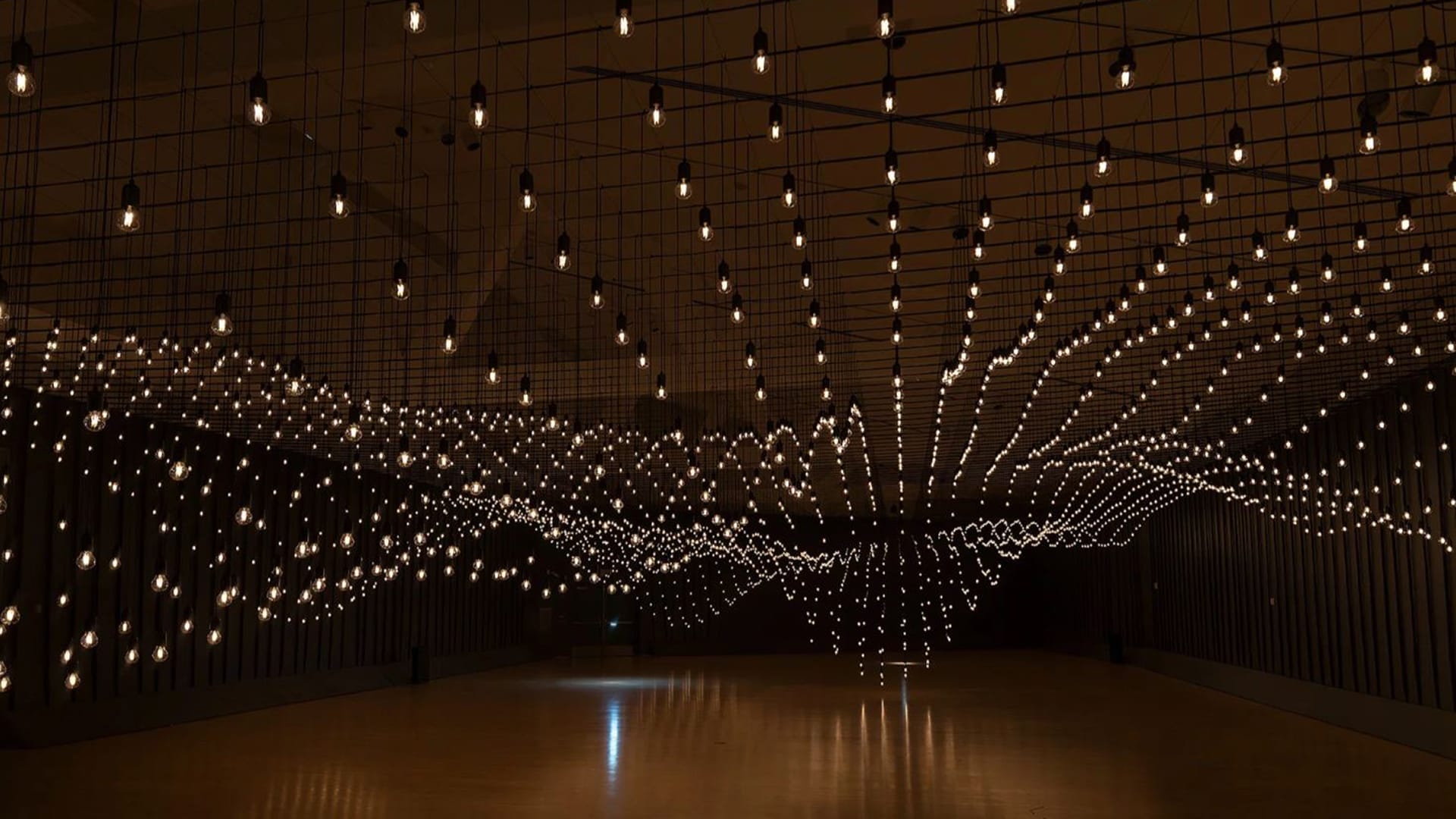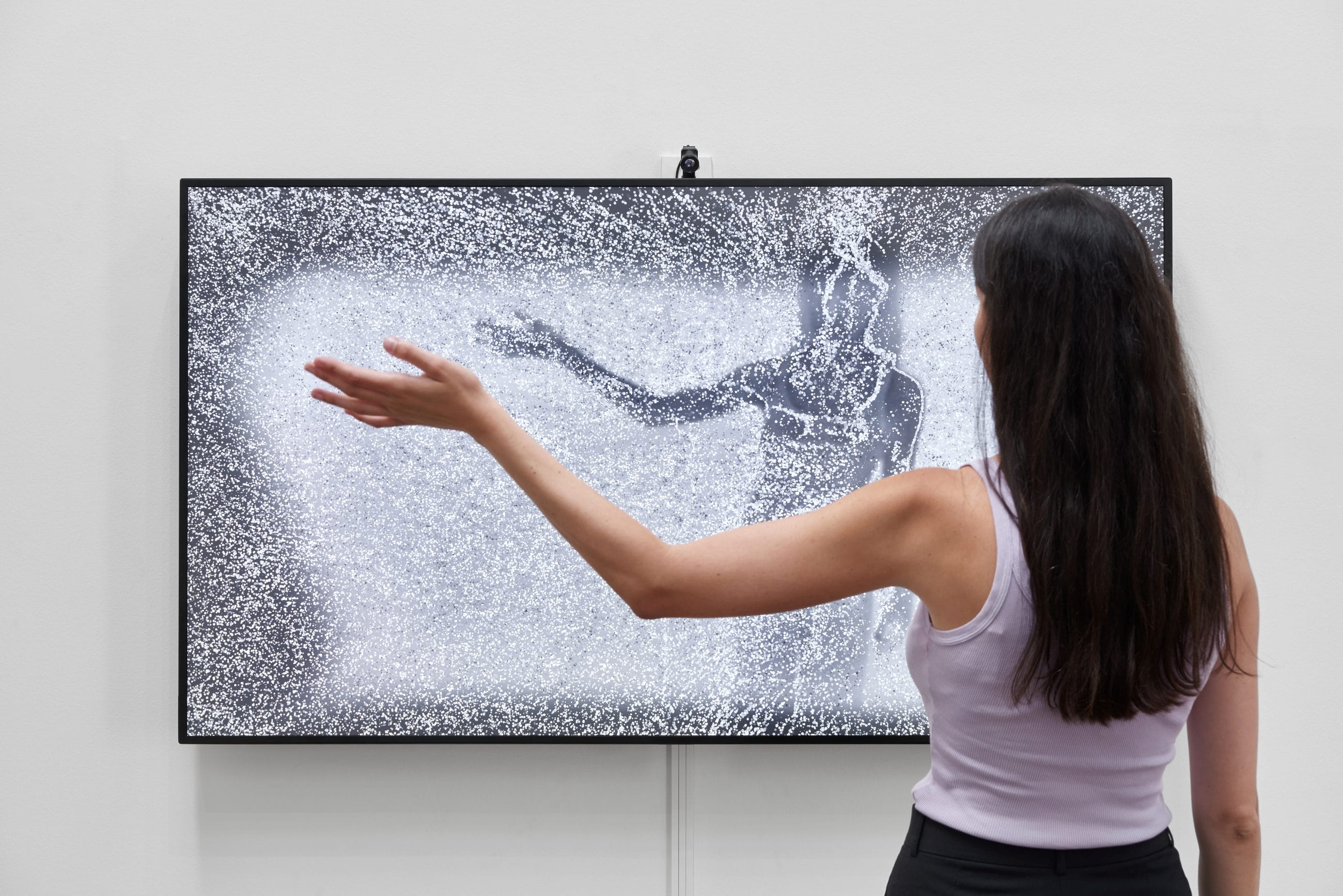
Rafael Lozano-Hemmer: Art and Technology in public spaces
Rafael Lozano-Hemmer, born in 1967 in Mexico City, is a Mexican-Canadian electronic artist whose work encompasses a blend of art, architecture, technological theater, and performance. Influenced from childhood by his parents’ creative environment, owners of a nightclub in Mexico City, Lozano-Hemmer developed an early interest in science and creativity. This dualism between art and science has profoundly shaped his artistic endeavors.
After relocating to Canada in 1985, he attended the University of Victoria in British Columbia, and later earned a degree in physical chemistry from Concordia University in Montreal. His laboratory experience, though not his long-term career, left an indelible mark on his approach to art, providing both conceptual inspiration and practical methods for his creations.
Lozano-Hemmer is renowned for merging art and technology, utilizing both indoor and outdoor spaces and a wide array of audiovisual technologies. His interactive installations in public spaces across Europe, Asia, and the Americas are celebrated for their use of robotics, real-time computer graphics, cinematic projections, positional sound, internet links, cellular interfaces, video and ultrasonic sensors, LED screens, and other devices. These works not only disrupt the homogenized urban condition but also offer critical platforms for public engagement.
With a keen focus on themes of perception, illusion, and surveillance, Lozano-Hemmer’s sculptural and video installations delve into the interactions between spectator and artwork, often employing texts and words to add another layer of meaning and encourage reflection.

Iconic Works and Technological Innovations
Rafael Lozano-Hemmer’s career is marked by numerous innovative works that have left an indelible imprint on the field of contemporary art, blending advanced technology with engaging public installations. One of his earliest and most recognized installations is “Alzado Vectorial” (or “Vectorial Elevation”), created in 1999. In this piece, participants via the internet directed spotlights over the central square of Mexico City. This experience marked the beginning of a series of similar installations in cities like Vitoria-Gasteiz, Lyon, Dublin, and Vancouver.
In 2007, Lozano-Hemmer made history by becoming the first artist to officially represent Mexico at the Venice Biennale with a solo exhibition at the Palazzo Soranzo Van Axel. Over the years, his works have been acquired by prestigious institutions such as the Museum of Modern Art in New York and the Tate Collection in the United Kingdom.
A distinctive aspect of Lozano-Hemmer’s work is the use of words and phrases in his installations. Works like “Third Person” and “Subtitled Public” utilize text to create profound reflections, often evoking feelings of helplessness or wonder in the audience through the random use of texts. In “33 Questions Per Minute,” for example, multiple screens generate questions at a rate of 33 per minute, with the audience having the opportunity to input their own questions into the system.
Lozano-Hemmer also coined the term “relational architecture” in 1994, describing his approach of overlaying audiovisual elements onto buildings and urban environments to transform their dominant narratives. Works such as “Solar Equation” and “Under Scan” are emblematic examples of this concept, where the audience plays an active role in the creation of the artwork.
His installations are not limited to large-scale projects; works like “Tape Recorders,” “Please Empty your Pockets,” and “Microphones” offer intimate and reflective experiences. While smaller in size, these works share the same relational and participatory principle as his larger projects.

Impact and Recognition in the International Artistic Panorama
Rafael Lozano-Hemmer’s impact on the international art scene is as profound as it is diverse. His ability to fuse art and technology, creating spaces for public interaction and reflection, has redefined how art is perceived and experienced. His works have been exhibited in some of the world’s most prestigious museums and galleries, including the San Francisco Museum of Modern Art, the Venice Biennale, and the biennials of Sydney, Liverpool, Shanghai, Istanbul, Seville, Seoul, Havana, and New Orleans.
Lozano-Hemmer’s work has been particularly celebrated for its innovative approach to “relational architecture”. Through this approach, he has explored new possibilities for interaction between space, technology, and audience, inviting participants into an active dialogue with the artwork. This has led to a form of art that not only engages the viewer but is also shaped by their participation.
The social relevance of his work is evident in pieces like “Zoom Pavilion”, in collaboration with Krzysztof Wodiczko, which investigates the dynamics of surveillance and identity in the digital age. Using technologies like facial recognition, Lozano-Hemmer flips the concept of surveillance, turning it into a means to explore and reflect upon personal and collective identity.
Despite the intensive use of technology, Lozano-Hemmer’s works never lose sight of the human element. Installations like “Pulse Room” highlight this duality, using technology to create a deeply human and shared experience. This work reflects the artist’s ability to use technology not as an end, but as a tool to explore and celebrate humanity.

fakewhale
Founded in 2021, Fakewhale advocates the digital art market's evolution. Viewing NFT technology as a container for art, and leveraging the expansive scope of digital culture, Fakewhale strives to shape a new ecosystem in which art and technology become the starting point, rather than the final destination.
You may also like
Manuel Esposito, Mattia Ragni, Are you tired? at Spaziolalepre, Tortoreto Lido
“Are you tired?” by Manuel Esposito and Mattia Ragni, curated by Spaziolalepre, at Spazi
The Stillness That Burns: Inside the World of Bill Viola
Lately we’ve found ourselves drawn to the spaces where time resists compression, where video art m
20 – The Baptism of Mikel Serone
Washington D.C., Tilted Kilt Pub & Eatery, United States “Duke, honey, let’s all just go hom




